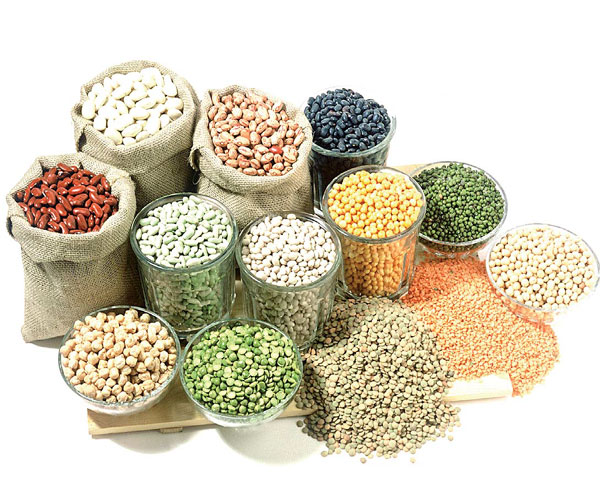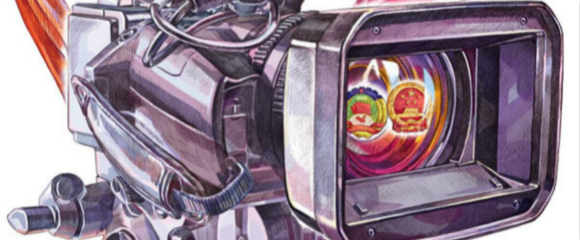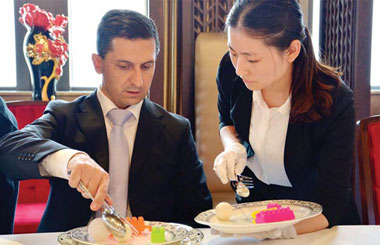Great grains of China
Updated: 2016-03-18 08:42
By Pauline D Loh(China Daily Europe)
|
|||||||||

Grains have become premium health supplements that tout the benefits such as in buckwheat, naked oats, sorghum and oats. Provided to China Daily
Editor's note: To understand China you have to sit down to eat. Food is the adhesive that holds the Chinese social fabric together. In the face of increasing globalization, food is also one of the last strong visages of community and culture.
The diversity of staple grains and cereals in China is as broad as the country is large. Most food historians agree that the Yangtze River forms a rough division between north and south.
Northern China mainly uses wheat to create an encyclopedic spread of noodles, buns and dumplings. In the south, rice is the main staple, although the varieties range in color - red, white, yellow and purple - and in texture, from long-grained or short-grained to glutinous or scented.
It was not always simply rice or wheat. The first five grains listed in Huangdi Neijing, the first farmers' reference that translates as the Inner Canons of the Yellow Emperor, were soya bean, millet, rice, red and mung beans, and wheat.
Wheat became widely accepted only after Silk Road merchants introduced new strains, but the terroir in the Central Plains suited this grain so perfectly that it became the most widely cultivated.
In what is now Hebei, Shanxi and Henan provinces, wheat is still the main grain. Chefs in Shanxi are known for their vast repertoire of noodles, which can range from delicate strands of hand-cut egg noodles to chunks of dough rapidly shaved into boiling water.
It is probably no coincidence that the shapes and varieties of Chinese noodles often mirror the pasta of the Mediterranean region.
The difference is in the sauces and rituals. Food is symbolic in the Middle Kingdom, and to the Chinese the long strands represent longevity. To this day, while the loving Western parent may bake a cake for the birthday child, the caring Chinese mother will lovingly cook birthday noodles.
Chinese noodles are also more often than not eaten in soup. Even when the noodles are eaten with sauce they tend to swim in thick gravy.
The humble noodle may be rapidly rolled out and cut for a simple family meal, but they are also always included in Chinese banquets that celebrate births, deaths and marriages.
Various regions have specific rituals associated with eating noodles.
In Shanxi, elderly folks are honored with village feasts during which guests pick out the longest noodle in their own bowl and place it in front of the celebrant. Thus, the birthday boy or girl gathers the collective good wishes of the happy congregation.
In certain villages, newly weds share a bowl of noodles after the guests are gone and before they retire to the nuptial bed.
And when a child celebrates his first birthday, he or she is fed noodles and a hard-boiled egg that has been dyed an auspicious red. The same dish of noodles appears once again when a child is about to take an important examination, go for a job interview or embark on a long journey.
In comparison, the eating of rice is more mundane, although it is still made into special dishes to mark important occasions.
Deep in the hills of the southwest, rice is steeped in herbal infusions to turn it black, red and yellow. These are then shared on long tables laid out in the main street of the village during Chinese New Year and other festivals.
In the southern provinces of Fujian and Taiwan, precious glutinous rice is cooked with salted meat and oily deep-fried shallots to announce the arrival of a new baby.
Recently, there has been a shift back to wuguzaliang, the five coarse grains and rough cereals that our country cousins still enjoy. In the cities these have become premium health supplements that tout the benefits of such as buckwheat, naked oats, sorghum and oats.
As far as the land is concerned, we have come full cycle.
pauline@chinadaily.com.cn
Today's Top News
EU to pitch migrant plan to Turkey
DPRK fires medium-range ballistic missile
Virgin Atlantic investigates abuse case
as story goes viral
Shanghai firm is latest Chinese investment in UK soccer business
Sino-UK documentary on Chinese New Year a hit
A 24-year-old PKK member is Ankara bomber
China to lead development of Swiss SMEs
Putin says Russians to start withdrawing from Syria
Hot Topics
Lunar probe , China growth forecasts, Emission rules get tougher, China seen through 'colored lens', International board,
Editor's Picks

|

|

|

|

|

|






